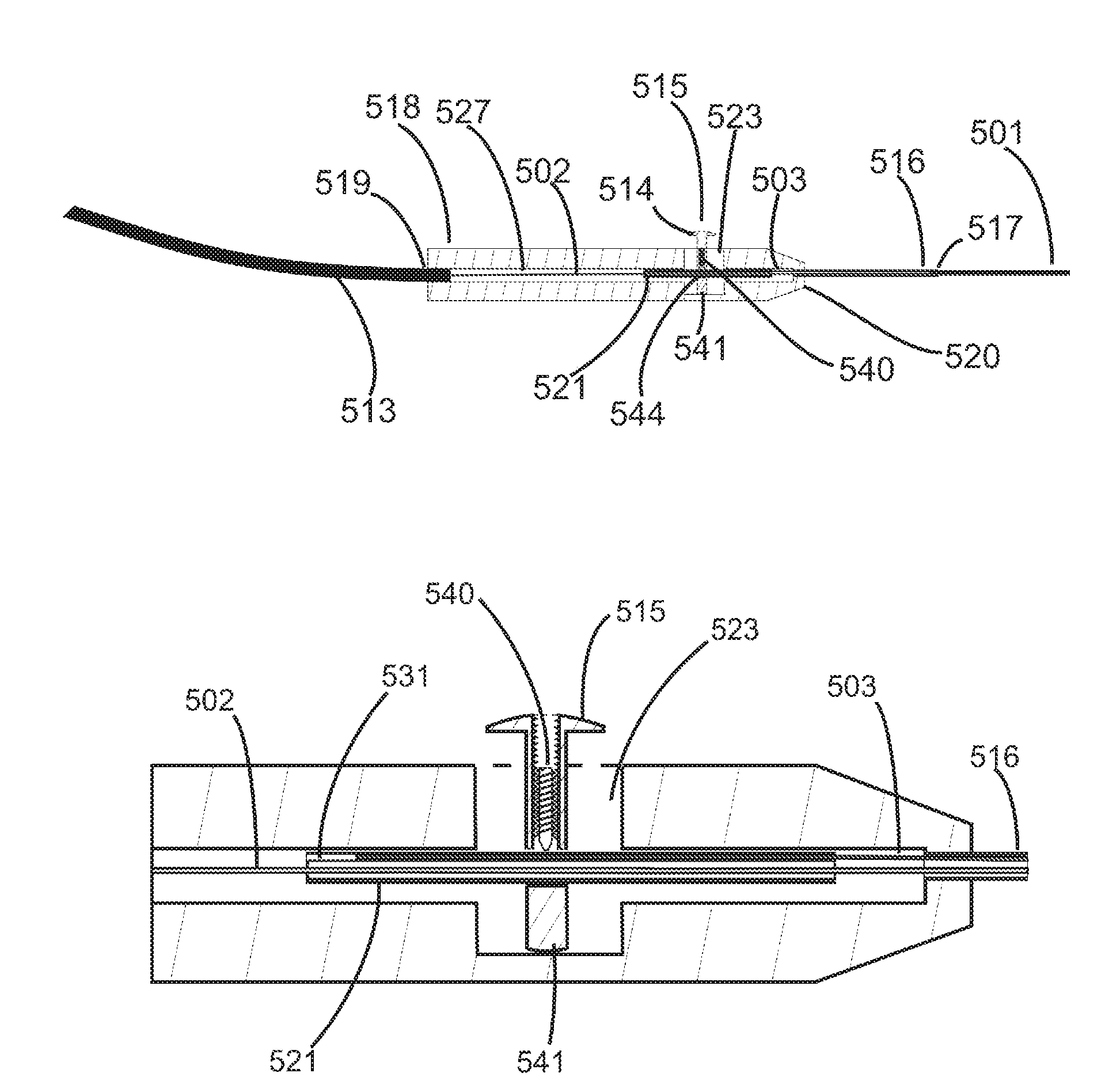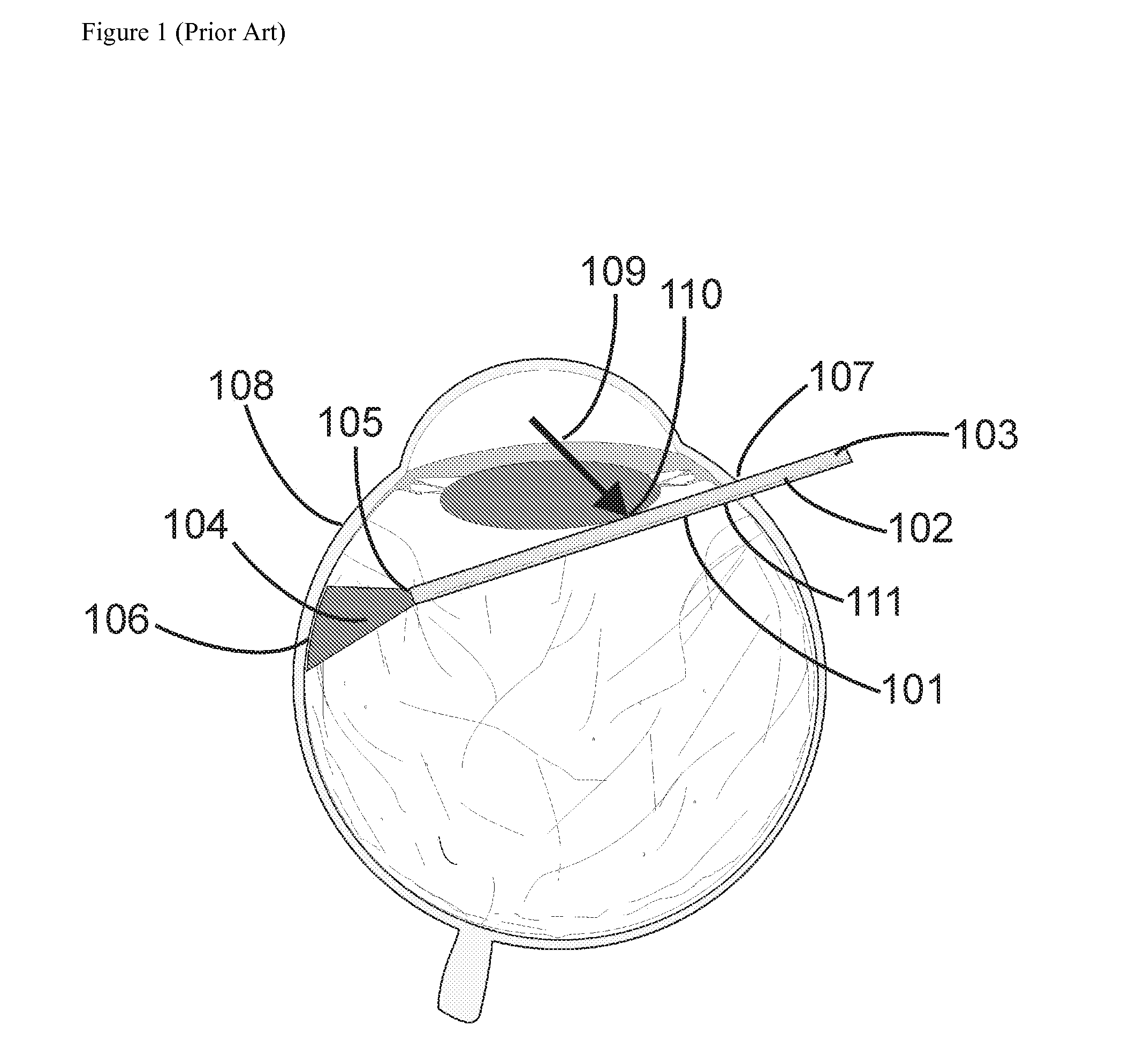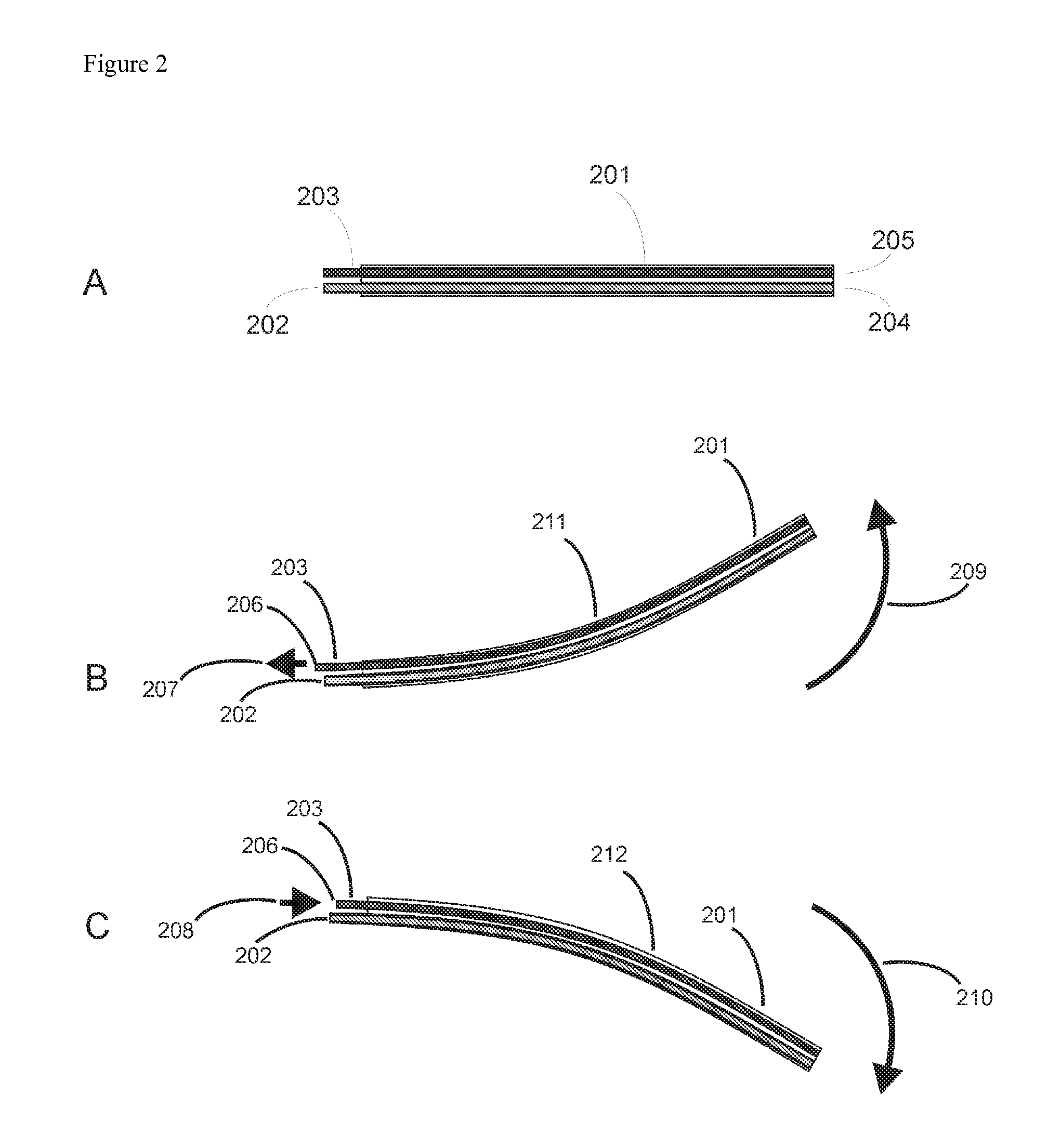Steerable and flexibly curved probes
a probe and flexural technology, applied in the field of insertable probes, can solve the problems of reducing the effectiveness of prior art laser probes, unable to use probes with great difficulty, and reducing the intensity of laser probes, so as to achieve the effect of better access to interior areas
- Summary
- Abstract
- Description
- Claims
- Application Information
AI Technical Summary
Benefits of technology
Problems solved by technology
Method used
Image
Examples
Embodiment Construction
[0027]The following is a description of several embodiments of various aspects of the invention. These embodiments are illustrative only. The invention is limited only by the scope of the claims that are appended hereto, and is by no means limited to particular examples described below.
[0028]The present invention is useful for many purposes. The anticipated field of use is generally referred to herein as “surgery.” However, the terms “surgery” and “surgical” should be understood in a broad sense, as also including diagnostic methods carried out internally, and related instruments, as well as minimally invasive procedures and instruments, or those employed through a small incision, such as in connection with catheterization and endoscopy. In addition, the invention is also adaptable to non-medical applications, such as non-medical endoscopy and boroscopy, and the use of the term “surgical” or like medical-related terms should not be understood as limiting the scope of the invention t...
PUM
 Login to View More
Login to View More Abstract
Description
Claims
Application Information
 Login to View More
Login to View More - R&D
- Intellectual Property
- Life Sciences
- Materials
- Tech Scout
- Unparalleled Data Quality
- Higher Quality Content
- 60% Fewer Hallucinations
Browse by: Latest US Patents, China's latest patents, Technical Efficacy Thesaurus, Application Domain, Technology Topic, Popular Technical Reports.
© 2025 PatSnap. All rights reserved.Legal|Privacy policy|Modern Slavery Act Transparency Statement|Sitemap|About US| Contact US: help@patsnap.com



